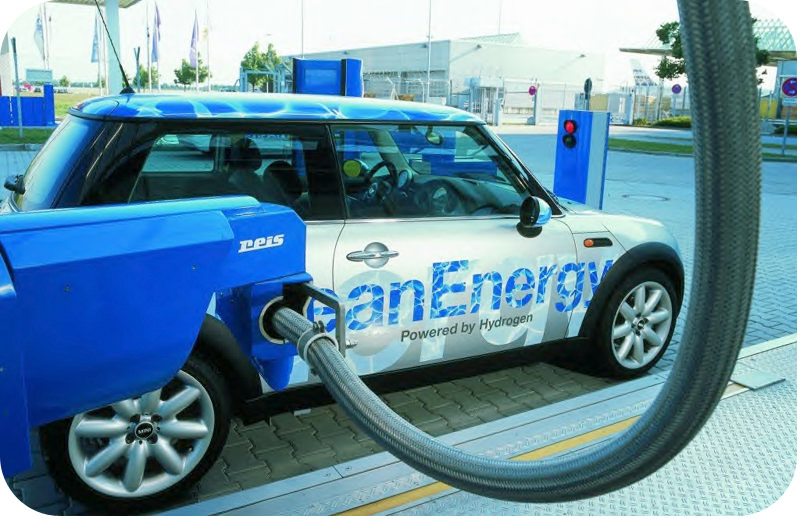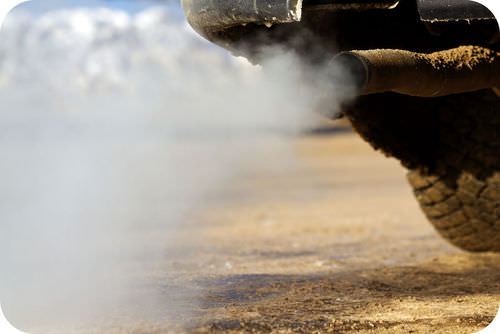10.28: Reducing Air Pollution
- Page ID
- 5505
\( \newcommand{\vecs}[1]{\overset { \scriptstyle \rightharpoonup} {\mathbf{#1}} } \)
\( \newcommand{\vecd}[1]{\overset{-\!-\!\rightharpoonup}{\vphantom{a}\smash {#1}}} \)
\( \newcommand{\dsum}{\displaystyle\sum\limits} \)
\( \newcommand{\dint}{\displaystyle\int\limits} \)
\( \newcommand{\dlim}{\displaystyle\lim\limits} \)
\( \newcommand{\id}{\mathrm{id}}\) \( \newcommand{\Span}{\mathrm{span}}\)
( \newcommand{\kernel}{\mathrm{null}\,}\) \( \newcommand{\range}{\mathrm{range}\,}\)
\( \newcommand{\RealPart}{\mathrm{Re}}\) \( \newcommand{\ImaginaryPart}{\mathrm{Im}}\)
\( \newcommand{\Argument}{\mathrm{Arg}}\) \( \newcommand{\norm}[1]{\| #1 \|}\)
\( \newcommand{\inner}[2]{\langle #1, #2 \rangle}\)
\( \newcommand{\Span}{\mathrm{span}}\)
\( \newcommand{\id}{\mathrm{id}}\)
\( \newcommand{\Span}{\mathrm{span}}\)
\( \newcommand{\kernel}{\mathrm{null}\,}\)
\( \newcommand{\range}{\mathrm{range}\,}\)
\( \newcommand{\RealPart}{\mathrm{Re}}\)
\( \newcommand{\ImaginaryPart}{\mathrm{Im}}\)
\( \newcommand{\Argument}{\mathrm{Arg}}\)
\( \newcommand{\norm}[1]{\| #1 \|}\)
\( \newcommand{\inner}[2]{\langle #1, #2 \rangle}\)
\( \newcommand{\Span}{\mathrm{span}}\) \( \newcommand{\AA}{\unicode[.8,0]{x212B}}\)
\( \newcommand{\vectorA}[1]{\vec{#1}} % arrow\)
\( \newcommand{\vectorAt}[1]{\vec{\text{#1}}} % arrow\)
\( \newcommand{\vectorB}[1]{\overset { \scriptstyle \rightharpoonup} {\mathbf{#1}} } \)
\( \newcommand{\vectorC}[1]{\textbf{#1}} \)
\( \newcommand{\vectorD}[1]{\overrightarrow{#1}} \)
\( \newcommand{\vectorDt}[1]{\overrightarrow{\text{#1}}} \)
\( \newcommand{\vectE}[1]{\overset{-\!-\!\rightharpoonup}{\vphantom{a}\smash{\mathbf {#1}}}} \)
\( \newcommand{\vecs}[1]{\overset { \scriptstyle \rightharpoonup} {\mathbf{#1}} } \)
\( \newcommand{\vecd}[1]{\overset{-\!-\!\rightharpoonup}{\vphantom{a}\smash {#1}}} \)
\(\newcommand{\avec}{\mathbf a}\) \(\newcommand{\bvec}{\mathbf b}\) \(\newcommand{\cvec}{\mathbf c}\) \(\newcommand{\dvec}{\mathbf d}\) \(\newcommand{\dtil}{\widetilde{\mathbf d}}\) \(\newcommand{\evec}{\mathbf e}\) \(\newcommand{\fvec}{\mathbf f}\) \(\newcommand{\nvec}{\mathbf n}\) \(\newcommand{\pvec}{\mathbf p}\) \(\newcommand{\qvec}{\mathbf q}\) \(\newcommand{\svec}{\mathbf s}\) \(\newcommand{\tvec}{\mathbf t}\) \(\newcommand{\uvec}{\mathbf u}\) \(\newcommand{\vvec}{\mathbf v}\) \(\newcommand{\wvec}{\mathbf w}\) \(\newcommand{\xvec}{\mathbf x}\) \(\newcommand{\yvec}{\mathbf y}\) \(\newcommand{\zvec}{\mathbf z}\) \(\newcommand{\rvec}{\mathbf r}\) \(\newcommand{\mvec}{\mathbf m}\) \(\newcommand{\zerovec}{\mathbf 0}\) \(\newcommand{\onevec}{\mathbf 1}\) \(\newcommand{\real}{\mathbb R}\) \(\newcommand{\twovec}[2]{\left[\begin{array}{r}#1 \\ #2 \end{array}\right]}\) \(\newcommand{\ctwovec}[2]{\left[\begin{array}{c}#1 \\ #2 \end{array}\right]}\) \(\newcommand{\threevec}[3]{\left[\begin{array}{r}#1 \\ #2 \\ #3 \end{array}\right]}\) \(\newcommand{\cthreevec}[3]{\left[\begin{array}{c}#1 \\ #2 \\ #3 \end{array}\right]}\) \(\newcommand{\fourvec}[4]{\left[\begin{array}{r}#1 \\ #2 \\ #3 \\ #4 \end{array}\right]}\) \(\newcommand{\cfourvec}[4]{\left[\begin{array}{c}#1 \\ #2 \\ #3 \\ #4 \end{array}\right]}\) \(\newcommand{\fivevec}[5]{\left[\begin{array}{r}#1 \\ #2 \\ #3 \\ #4 \\ #5 \\ \end{array}\right]}\) \(\newcommand{\cfivevec}[5]{\left[\begin{array}{c}#1 \\ #2 \\ #3 \\ #4 \\ #5 \\ \end{array}\right]}\) \(\newcommand{\mattwo}[4]{\left[\begin{array}{rr}#1 \amp #2 \\ #3 \amp #4 \\ \end{array}\right]}\) \(\newcommand{\laspan}[1]{\text{Span}\{#1\}}\) \(\newcommand{\bcal}{\cal B}\) \(\newcommand{\ccal}{\cal C}\) \(\newcommand{\scal}{\cal S}\) \(\newcommand{\wcal}{\cal W}\) \(\newcommand{\ecal}{\cal E}\) \(\newcommand{\coords}[2]{\left\{#1\right\}_{#2}}\) \(\newcommand{\gray}[1]{\color{gray}{#1}}\) \(\newcommand{\lgray}[1]{\color{lightgray}{#1}}\) \(\newcommand{\rank}{\operatorname{rank}}\) \(\newcommand{\row}{\text{Row}}\) \(\newcommand{\col}{\text{Col}}\) \(\renewcommand{\row}{\text{Row}}\) \(\newcommand{\nul}{\text{Nul}}\) \(\newcommand{\var}{\text{Var}}\) \(\newcommand{\corr}{\text{corr}}\) \(\newcommand{\len}[1]{\left|#1\right|}\) \(\newcommand{\bbar}{\overline{\bvec}}\) \(\newcommand{\bhat}{\widehat{\bvec}}\) \(\newcommand{\bperp}{\bvec^\perp}\) \(\newcommand{\xhat}{\widehat{\xvec}}\) \(\newcommand{\vhat}{\widehat{\vvec}}\) \(\newcommand{\uhat}{\widehat{\uvec}}\) \(\newcommand{\what}{\widehat{\wvec}}\) \(\newcommand{\Sighat}{\widehat{\Sigma}}\) \(\newcommand{\lt}{<}\) \(\newcommand{\gt}{>}\) \(\newcommand{\amp}{&}\) \(\definecolor{fillinmathshade}{gray}{0.9}\)Can a car run on hydrogen?
Yes! But so far this is not feasible for more than just a few models. A major problem with hydrogen cars is the lack of hydrogen fuel. Many ways to reduce pollution are being developed. What can you do to help?
The Clean Air Act
Air quality is a measure of the pollutants in the air. More pollutants mean poorer air quality. Poor air quality started to become a serious problem after the Industrial Revolution. Factories burned coal for energy. Gasoline burned by cars and trucks added greatly to air pollution. By the mid-1900s, air quality in many big cities was very bad. Incidents in London and in U.S. cities alerted people to the extent of the problem. It was clear that air quality needed to be protected.
In 1970 in the U.S., the Clean Air Act was passed. It limits what can be released into the air. The air in the U.S. is slightly cleaner now than it was 50 years ago. But air pollution has not gone away. Vehicles, factories, and power plants still release more than 150 million tons of pollutants into the air each year.
Reducing Pollutants from Fossil Fuels
There are two basic types of strategies for reducing pollution from fossil fuels:
- Use less fossil fuel.
- Prevent pollutants from entering the air.
Use Less Fossil Fuel
We can reduce our use of fossil fuels in several ways:
- Conserve fossil fuels. For example, turning out lights when we aren’t using them saves electricity. Why does this help? A lot of the electricity we use comes from coal-burning power plants.
- Use fossil fuels more efficiently. For example, driving a fuel-efficient car lets you go farther on each gallon of gas. This can add up to a big savings in fossil fuel use.
- Keep up with technology. Hybrid cars run on electricity that would be wasted during braking. These cars use gas only as a backup fuel. As a result, they produce just 10 percent of the air pollution produced by regular cars.
Keep Air Free of Pollutants
Some of the pollutants from fossil fuels can be filtered out of exhaust before it is released into the air (Figure below). Other pollutants can be changed to harmless compounds before they are released. Two widely used technologies are scrubbers and catalytic converters.
- Scrubbers are used in factories and power plants. They remove particulates and waste gases from exhaust before it is released to the air.
- Catalytic converters are used on motor vehicles. They break down pollutants in exhaust to non-toxic compounds. For example, they change nitrogen oxides to harmless nitrogen and oxygen gases.
Before catalytic converters were required, cars spewed a lot of pollutants into the air.
Increase Alternative Energy Sources
Developing alternative energy sources is important. What are some of the problems facing wider adoption of alternative energy sources?
- The technologies are still being developed. This includes sources of alternative energy, like solar and wind.
- Solar and wind are still expensive relative to fossil fuels, but their costs are rapidly decreasing. Some renewable energy sources are now cheaper than fossil fuels. Still, the technology needs to advance so that the price continues to fall.
- Some areas get low amounts of sunlight and are not suited for solar. Others do not have much wind. It is important that regions develop what best suits them. The desert Southwest will need to develop solar. The Great Plains can use wind energy. Perhaps some locations will rely on nuclear power.
Ways You Can Reduce Air Pollution
Everyone can help to reduce air pollution. Just use less fossil fuels! How can you do this?
- Ride a bike or walk instead of driving.
- Take a bus or carpool.
- Buy a fuel efficient car.
- Turn off lights and appliances when they are not in use.
- Use energy efficient light bulbs and appliances.
- Buy fewer things that are manufactured using fossil fuels.
All these actions reduce the amount of energy that power plants need to produce.
Summary
- Catalytic converters reduce pollution from cars.
- To reduce air pollution, either use less fossil fuels, or clean emissions before they enter the air.
- Different types of clean energy can be developed for different locations. Some regions are suited for solar, others for wind, etc.
Review
- Why is the Clean Air Act important?
- Why is it important to develop alternative energy sources?
- What can you do to reduce the amount of air pollution you produce?



